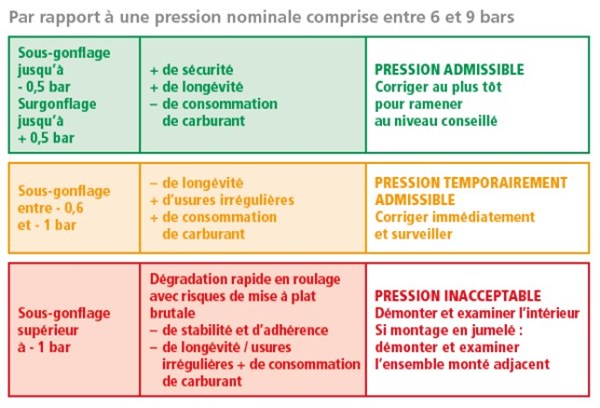
With the arrival of winter time and the drop in temperatures, an often overlooked phenomenon deserves our full attention: the decrease in tire pressure. This change, although subtle, can have significant consequences for road safety, fuel consumption, and tire wear.
The French Tire Association (Syndicat du Pneu) reminds us that every 10°C drop in temperature results in an average decrease of 0.1 bar in tire pressure, whether for passenger cars or trucks. Therefore, a pressure measured at 25°C may have dropped by 0.2 bar when the temperature falls to 5°C. This physical phenomenon is explained by the contraction of air at low temperatures, reducing the volume and thus the pressure inside the tire.
This drop in pressure may seem minimal, but it has a real impact. Insufficient pressure increases rolling resistance, leading to higher fuel consumption and premature tire wear. Even worse, it can compromise braking efficiency and handling, especially on wet or icy roads.
Industry professionals therefore recommend regular pressure checks, especially during seasonal changes. It is even advisable to anticipate temperature drops by preemptively adding 0.2 bar to the usual pressure. This practice compensates for losses due to cold weather and maintains optimal performance.
For heavy goods vehicles, the ideal pressure is generally between 7 and 9 bar, depending on the load carried and the type of use. Appropriate pressure not only ensures the safety of the driver and other road users, but also improves efficiency by reducing maintenance and fuel costs.
Many workshops offer free checks or checks included in their maintenance services. Don't hesitate to ask your manager or workshop for a check-up. It's a simple, quick step that can make all the difference on the road.